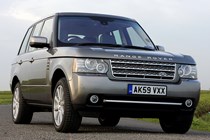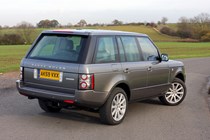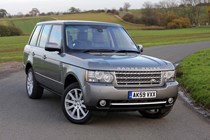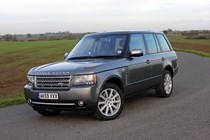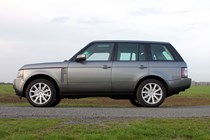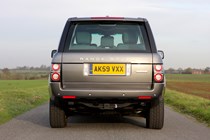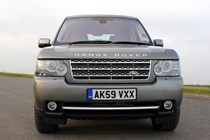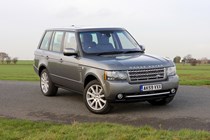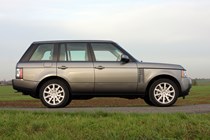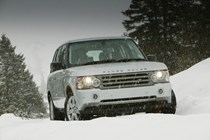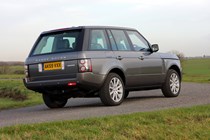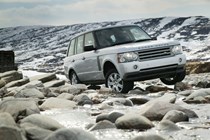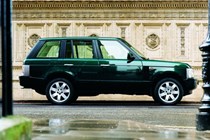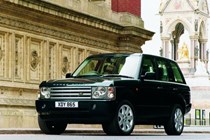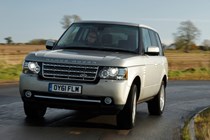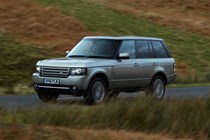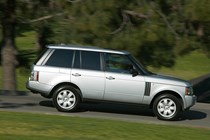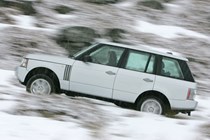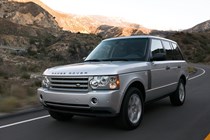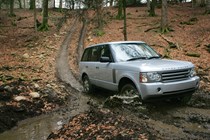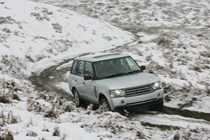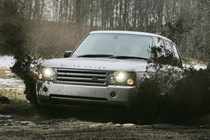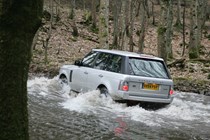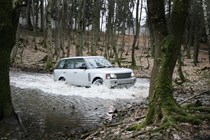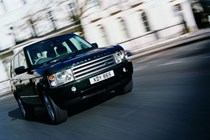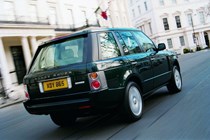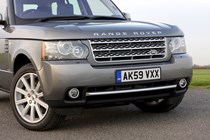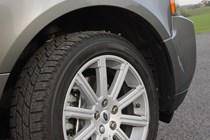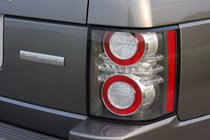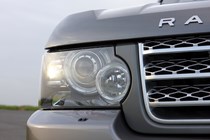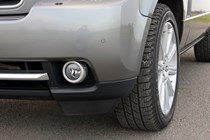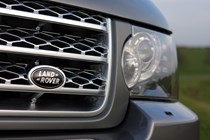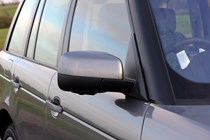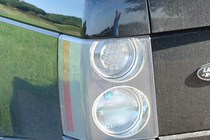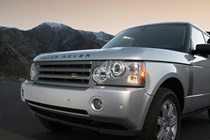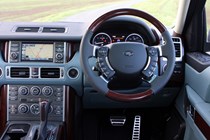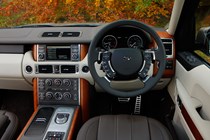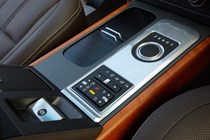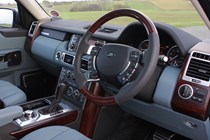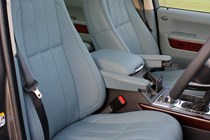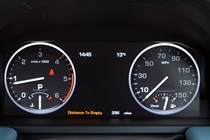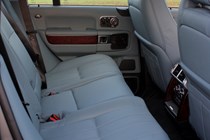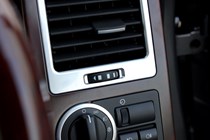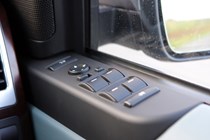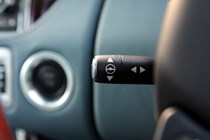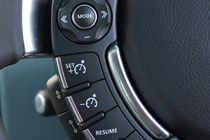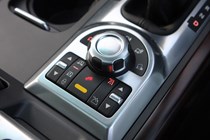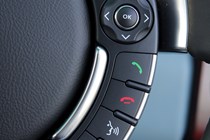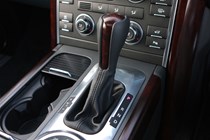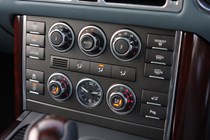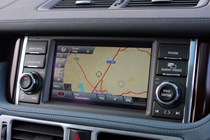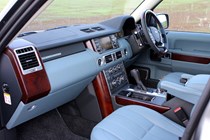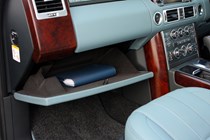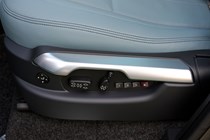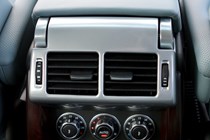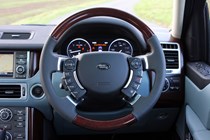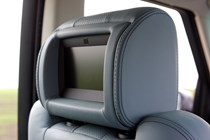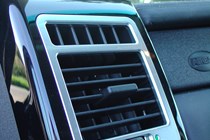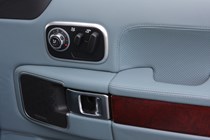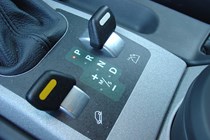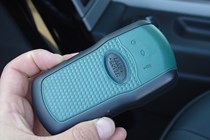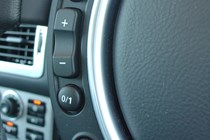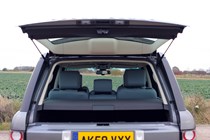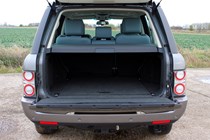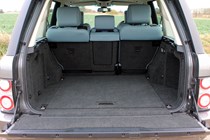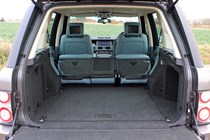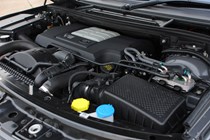
Range Rover Estate (2002-2012) boot space, practicality and safety
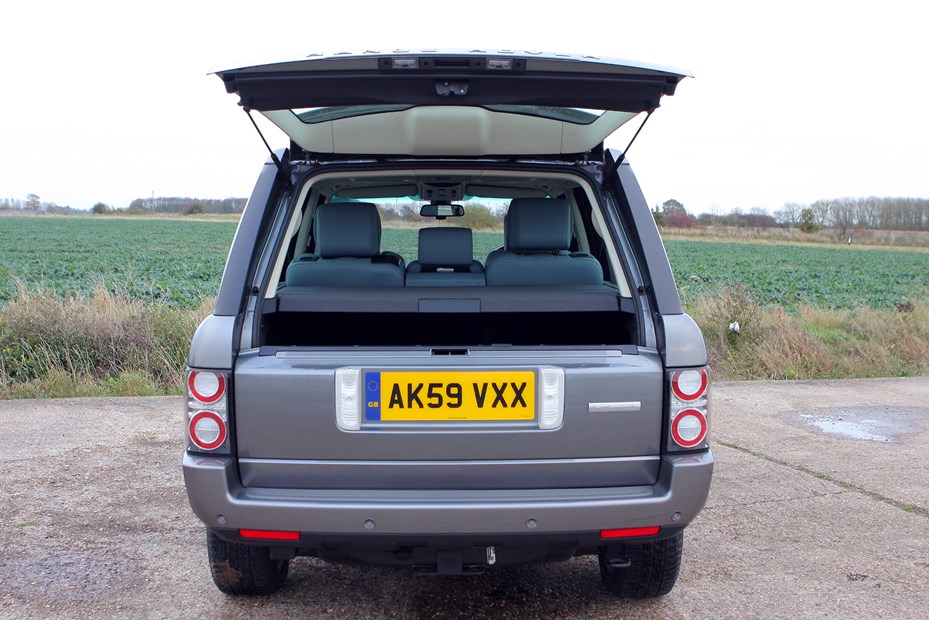
Despite its large size, the Range Rover didn’t achieve the maximum five-star rating in Euro NCAP crash tests, instead it was awarded four stars. Still, as you’d expect it has an immensely strong body but the safety organisation highlighted risks to the driver’s and passenger’s knees from hard points behind the facia. On the plus side, all models get eight airbags including curtain bags for those in the rear and electronic safety aids complement the all-wheel traction.
As you’d expect considering it is almost five metres long, the Range Rover has a huge boot while the split tailgate (the bottom section folds down like a pick-up truck) makes loading and unloading larger objects easy. It also makes a useful seat for changing out of muddy boots. The load area itself is wide and deep – ideal for large amounts of luggage for long trips abroad.
The rear seats split and fold down for longer items and the maximum carrying capacity is more than 2,000 litres. If you plan on doing serious off-roading (however unlikely that seems in a Range Rover) there’s also an optional VentureCam. This is a wireless video camera which transmits a live colour picture on the dash screen from anywhere around the vehicle and helps avoid rocks when off roading.
It can also be fixed to keep an eye on trailers or horseboxes when towing. The boot is even bigger than on the previous model, and features numerous eyelets for keeping luggage firmly in place and the traditional split tailgate opening continues. Rear seats split-fold for carrying antique furniture. Some wheel arch intrusion limits the ultimate practicality of the boot.
Euro NCAP rating
Ratings for this model not available

Equipment and options
- ABS
- Alarm
- Body coloured bumpers
- Climate control
- Driver`s airbag
- Electric driver`s seat
- Electric passenger`s seat
- Folding rear seats
- Height adjustable drivers seat
- Leather seat trim
- PAS
- Passenger`s airbag
- Remote locking
- Side airbags
- Steering wheel rake adjustment
- Steering wheel reach adjustment
- Traction control
- 3x3 point rear seat belts
- Alloy wheels
- CD Multichanger
- Cloth seat trim
- Cruise control
- Electric mirrors
- Front electric windows
- Front fog lights
- Full size spare wheel
- Headlight washers
- Heated mirrors
- Isofix child seat anchor points
- Lumbar support
- Metallic Paint
- Rear electric windows
- Service indicator
- n/a
- 3x3 point rear seat belts
- CD Multichanger
- Cruise control
- DVD
- Electric mirrors
- Electric sunroof
- Front electric windows
- Front fog lights
- Full size spare wheel
- Headlight washers
- Heated mirrors
- Heated seats
- Isofix child seat anchor points
- Lumbar support
- Rear electric windows
- Sat Nav
- Service indicator
- Telephone
- TV
- Audio remote
- Metallic Paint
- Space saver spare wheel
- Electric mirrors
- Electric sunroof
- Headlight washers
- Heated seats
- Metallic Paint
- Sat Nav
- TV
- 3x3 point rear seat belts
- Alloy wheels
- Audio remote
- CD
- CD Multichanger
- Cruise control
- DVD
- Front electric windows
- Front fog lights
- Full size spare wheel
- Heated mirrors
- Isofix child seat anchor points
- Lumbar support
- Parking sensors
- Rear electric windows
- Service indicator
- Space saver spare wheel
- Telephone
- 3x3 point rear seat belts
- Electric mirrors
- Electric sunroof
- Front electric windows
- Front fog lights
- Full size spare wheel
- Headlight washers
- Heated mirrors
- Heated seats
- Isofix child seat anchor points
- Lumbar support
- Metallic Paint
- Rear electric windows
- Sat Nav
- Service indicator
- Space saver spare wheel
- Telephone
- TV
- Audio remote
- CD
- CD Multichanger
- Cruise control
- DVD
- Parking sensors
- 3x3 point rear seat belts
- CD Multichanger
- Cruise control
- Electric mirrors
- Front electric windows
- Front fog lights
- Full size spare wheel
- Headlight washers
- Heated seats
- Lumbar support
- Metallic Paint
- Service indicator
- Telephone
- Alloy wheels
- Audio remote
- CD
- Cloth seat trim
- Heated mirrors
- Isofix child seat anchor points
- Parking sensors
- Rear electric windows
- Sat Nav
- Space saver spare wheel
- TV
- 3x3 point rear seat belts
- Audio remote
- CD
- CD Multichanger
- Cloth seat trim
- Cruise control
- Front electric windows
- Front fog lights
- Full size spare wheel
- Lumbar support
- Metallic Paint
- Service indicator
- n/a
- 3x3 point rear seat belts
- Cruise control
- Electric mirrors
- Electric sunroof
- Front electric windows
- Front fog lights
- Headlight washers
- Heated seats
- Lumbar support
- Metallic Paint
- Sat Nav
- Service indicator
- Telephone
- TV
- Alloy wheels
- Audio remote
- CD
- CD Multichanger
- Full size spare wheel
- Heated mirrors
- Isofix child seat anchor points
- Parking sensors
- Rear electric windows
- Space saver spare wheel
- 3x3 point rear seat belts
- Electric mirrors
- Electric sunroof
- Front electric windows
- Front fog lights
- Headlight washers
- Heated mirrors
- Heated seats
- Isofix child seat anchor points
- Lumbar support
- Metallic Paint
- Rear electric windows
- Sat Nav
- Service indicator
- Telephone
- TV
- Audio remote
- CD Multichanger
- Cruise control
- DVD
- Full size spare wheel
- Space saver spare wheel
- 3x3 point rear seat belts
- Cruise control
- Electric mirrors
- Electric sunroof
- Front electric windows
- Front fog lights
- Headlight washers
- Heated mirrors
- Heated seats
- Isofix child seat anchor points
- Lumbar support
- Metallic Paint
- Rear electric windows
- Sat Nav
- Service indicator
- Telephone
- TV
- Alloy wheels
- Audio remote
- CD
- CD Multichanger
- Full size spare wheel
- Parking sensors
- Space saver spare wheel
Dimensions
| Length | 4950mm - 4972mm |
|---|---|
| Width | 2191mm - 2216mm |
| Height | 1863mm - 1902mm |


